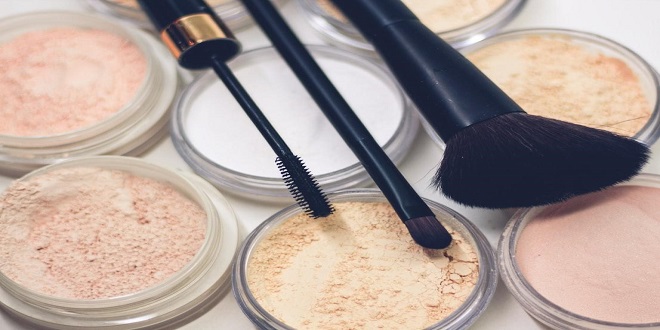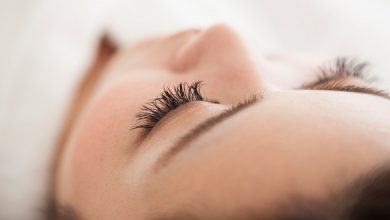Prioritizing Health in Beauty: 3 Makeup Products To Avoid

It’s easy to overlook the potential dangers lurking within the products we use on a daily basis. Beauty and skincare products are meant to enhance our appearance and well-being. However, some of them harbor hidden risks that can pose serious threats to our health.
In this article, we delve into the world of dangerous makeup and skincare products. Let’s look at some of the potential health hazards and the importance of taking a closer look at what we put on our bodies.
1. Talc-Based Baby Powder
One of the most alarming revelations in recent years has been the association between talc-based baby powder and serious health conditions. Several studies have linked talcum powder usage to an increased risk of ovarian cancer.
The issue stems from the presence of naturally occurring minerals, such as asbestos, in some talc deposits. Asbestos is a known carcinogen, and its presence in talcum powder can pose a serious health hazard.
While talc manufacturers take steps to ensure the purity of their products, the possibility of contamination still remains a concern. Companies like Johnson & Johnson have faced scrutiny for their knowledge of the potential dangers associated with talc but failing to address them adequately.
If you have faced health issues as a result of J&J talcum powder, you should probably file for damages. However, if you are concerned about the J&J talcum powder lawsuit deadline and criteria, you shouldn’t be too worried.
According to TorHoerman Law, there is still no deadline, and people who suffered from J&J’s baby powder can very much file for damages. The main criteria would be that you have suffered either ovarian or other types of cancer as a result of their talcum powder.
2. Phthalates in Hairspray and Nail Polish
Phthalates are a group of chemicals that are commonly used in the production of plastics to make them more flexible, durable, and resistant to breaking. They are also used in a variety of consumer products, including cosmetics, such as nail polishes, hairsprays, and fragrance products.
One of the main concerns surrounding phthalates is their potential to interfere with the endocrine system. Phthalates are classified as endocrine disruptors because they can mimic or interfere with the body’s hormones, particularly estrogen and testosterone. They have been linked to breast cancer and other health issues.
This disruption can lead to various adverse effects on human health, especially during critical stages of development, such as prenatal and early childhood periods.
3. Lead in Kohl / Eyeliner
Research conducted by Montserrat Filella, et al, showed that Kohl with lead was widely available in Europe. Lead is a heavy metal that poses serious health risks, especially when it comes into contact with delicate areas like the eyes.
Lead exposure can have various adverse effects on the body, particularly on the nervous system. In the case of Kohl, potential health risks include:
- Reduced fertility
- Menstrual irregularities
- Delayed onset of puberty
- Hormonal changes
- Long-term neurocognitive impacts in young children.
While Kohl is not permitted in the U.S. due to a ban from the Food and Drug Administration (FDA), other countries in Europe still permit it.
Misconceptions and the Need for Vigilance
Many people assume that products labeled as “natural” or “organic” are automatically safe and free from harmful ingredients. However, natural or organic ingredients can still cause allergies and irritations in some individuals.
You want to read the ingredient list and research the safety of individual ingredients, regardless of whether the product is labeled as natural or organic.
Easy availability is also a common cause for disregarding safety. Just because a cosmetic product is available for sale does not necessarily mean it has undergone rigorous safety testing.
Cosmetic regulation can vary between countries, and some ingredients may be approved for use without extensive safety data.
Another common misconception is the implication behind ‘expensive’ products. The price tag of a cosmetic product does not necessarily reflect its safety or efficacy. Both high-end and budget-friendly brands can offer products with varying levels of safety and quality.
It’s best not to trust companies until you verify that they are trustworthy.
Empowering Consumer Choices
In an era where information is readily available, consumers have the power to make informed choices about the products they purchase.
Staying aware of litigation against makeup companies and understanding conflicts of interest in sponsored ‘studies’ can help keep information and understanding objective.
Organizations like the Campaign for Safe Cosmetics and the Environmental Working Group can provide reputable sources of information to guide consumer decisions. Try to support organizations that advocate for stricter regulations and safety standards within the cosmetic industry.
Conclusion
Consumer awareness plays a vital role in safeguarding health. We must recognize the misconceptions that can lead to health risks and challenge them with accurate information.
The pursuit of safe makeup products is an essential aspect of self-care, and our well-being should never be compromised for the sake of beauty. As far as possible, embrace a cautious approach, conduct research, and seek expert opinions, especially when trying out new makeup products.


